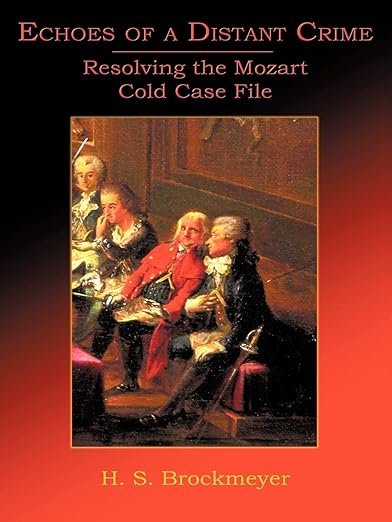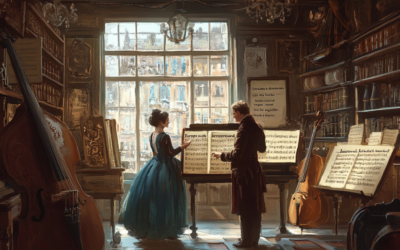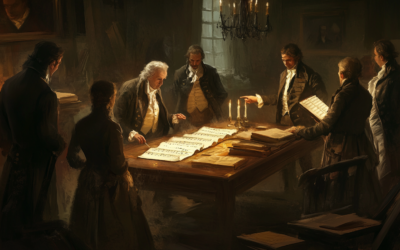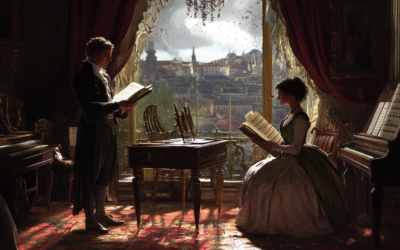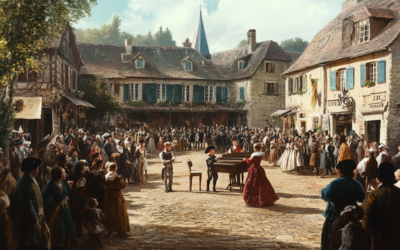The Echo of the Pummerin Bell
And Its Influence on Mozart
The deep, resonant tones of the Pummerin bell in St. Stephen’s Cathedral may have inspired Mozart’s compositions for bass voices, particularly Sarastro in The Magic Flute. As he lived near the cathedral in his final year, the profound sound of the bell might have shaped his musical imagination, infusing his works with a depth that echoes through time.
"Sarastro’s earth-shaking arias... undeniably replicate the sonorous, profound tones of the Pummerin."
H. S. Brockmeyer
The Voice of Vienna
For centuries, the Pummerin bell in St. Stephen’s Cathedral has been the resounding voice of Vienna. With its deep, earth-shaking resonance, this legendary bell has marked the city’s most significant moments, from war to peace, destruction to resurrection. The bell’s rich history spans from its origins in captured Ottoman cannons to its destruction during World War II and eventual recasting. But beyond its historical and symbolic importance, did the Pummerin’s tones find their way into the works of one of Vienna’s most famous composers?
Mozart and the Deep Tones of the Pummerin
Mozart, who lived near St. Stephen’s Cathedral during the final year of his life, would have been intimately familiar with the solemn, booming voice of the Pummerin. H.S. Brockmeyer suggests that the composer may have drawn inspiration from the bell’s immeasurably deep tones when writing for bass singers.
The first potential influence can be seen in The Marriage of Figaro (1786), where the role of Figaro, originally sung by Francesco Benucci, requires a strong, resonant bass. The theme continues in Don Giovanni (1787), where the terrifying Commendatore, portrayed by Giuseppe Lolli in Prague and later Francesco Bussani in Vienna, delivers a chilling bass presence. However, the most striking example comes from The Magic Flute (1791), in which Sarastro’s arias reflect the profound timbre of the Pummerin.
The Living Sound of the Pummerin
Sarastro, the high priest in The Magic Flute, is the ultimate embodiment of authority and wisdom, characteristics that are reinforced by the depth and power of his voice. His arias, “O Isis und Osiris” and “In diesen heil’gen Hallen”, are built upon low, sustained tones that mirror the grave solemnity of the Pummerin bell. This connection is further supported by the fact that Mozart, living at 970 Rauhensteingasse in 1791, was within earshot of the cathedral’s bell, which likely resonated through his daily life.
A Cathedral That Withstood Time and Fire
St. Stephen’s Cathedral has survived centuries of wars and destruction, most notably the catastrophic fire of 1945 that destroyed the original Pummerin. Looters inadvertently set fire to the cathedral’s wooden roof, causing the bell to plummet to the stone floor. A 22-ton bomb further devastated the structure. Despite this tragedy, a second Pummerin was recast using the remnants of the original, preserving its historic essence.
Mozart’s Vienna
H.S. Brockmeyer paints a vivid picture of Mozart’s Vienna, imagining the composer and his wife Constanze on a winter Sunday morning, with the distant tolling of the Pummerin calling the faithful to Mass. Mozart, ever the irreverent spirit, jokes with Constanze before she heads to St. Stephen’s, where the solemn resonance of the bell fills the grand cathedral. This evocative imagery suggests that the Pummerin was more than just a sound in Mozart’s environment—it was an integral part of the city’s sonic fabric, seeping into his consciousness and perhaps influencing his musical language.
A Supernatural Encounter
Brockmeyer recounts an eerie experience in 2010 when, during a late-night walk, she witnessed what appeared to be a ghostly presence emerging from St. Stephen’s Cathedral. The translucent form twisted and floated above the cathedral, prompting her to whimsically address it as “Pummerin.” Could the bell’s spirit still roam the Vienna night, echoing its ancient tones? While this remains a mystery, it underscores the almost mystical connection between the bell, the city, and its musical legacy.
An Echo Through Time
Whether or not Mozart consciously drew inspiration from the Pummerin bell, its deep, resonant tones undeniably parallel the commanding bass lines in his compositions. The bell’s sound, embedded in the daily life of 18th-century Vienna, may have seeped into his musical subconscious, shaping the voices of Figaro, the Commendatore, and most notably, Sarastro.
The Pummerin remains, like Mozart’s music, a symbol of Vienna’s endurance and artistic grandeur. Its reverberations continue to remind us of the city’s past, its destruction and resurrection, and the timeless legacy of those who once walked its streets.
You May Also Like
Unveiling the Truth Behind the Drawing
H. S. Brockmeyer’s latest research unravels the mystery behind a July 5, 1791, letter from Mozart to his wife. This remarkable investigation uncovers the original, unembellished drawing Mozart included—vastly different from the altered version widely reproduced in collections today. The discovery raises significant questions about historical accuracy and the intentional shaping of Mozart’s legacy.
The Deceptive Nature of Mozart’s Catalogue
The Thematic Catalogue traditionally credited to Mozart is fraught with inaccuracies, suggesting that many of his famous works might not be his at all. This prompts a necessary reevaluation of Mozart’s legacy and the authenticity of his compositions.
The Mozart Myth Unveiled: A Deeper Look
Mozart’s legacy is far from the untarnished narrative of genius that history would have us believe. The web of deceit woven around his name by those closest to him, including his own widow, reveals a much darker story.
The Other Side of Mozart’s Legacy
Explore the untold story of Mozart, where myth and reality collide. Our critical examination of his life and works reveals a legacy shaped by profit, myth-making, and misattribution. Join us in uncovering the truth behind the man and his music.
The Deception Surrounding Mozart’s Legacy
Anton Eberl’s confrontation with Constanze in 1798 exposed a web of deceit surrounding Mozart’s legacy, revealing that several of his compositions were falsely attributed to the late composer. This chapter uncovers the ethical dilemmas and controversies that have marred the posthumous reputation of one of history’s most celebrated musicians.
Leopold’s Invisible Hand
Behind the glittering performances of young Wolfgang and Nannerl Mozart lay the meticulous guidance of their father, Leopold. Often considered a mere teacher, Leopold’s role in composing and shaping their early musical successes has been largely overlooked. Was the child prodigy truly a genius, or was it Leopold who orchestrated his son’s rise to fame?

